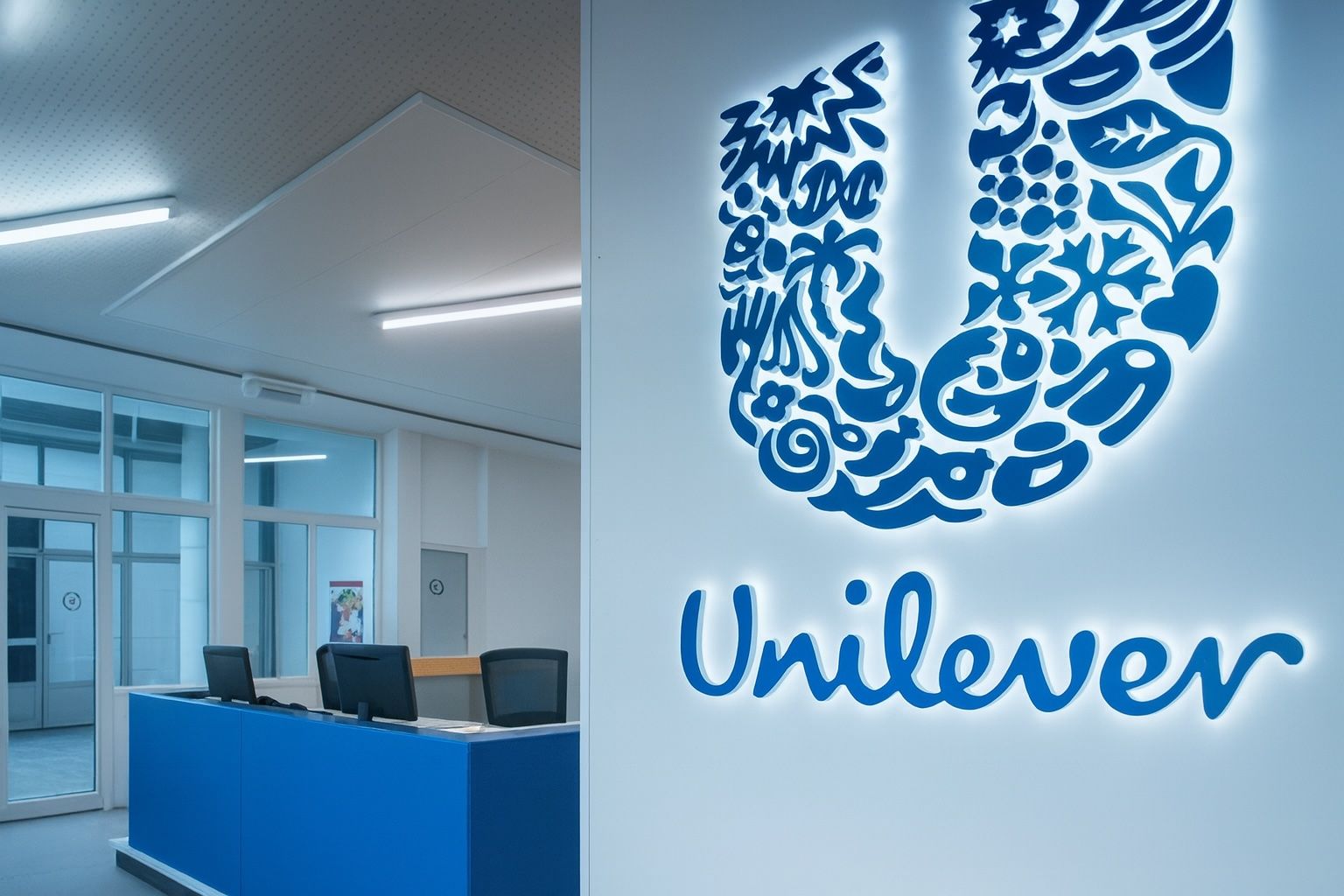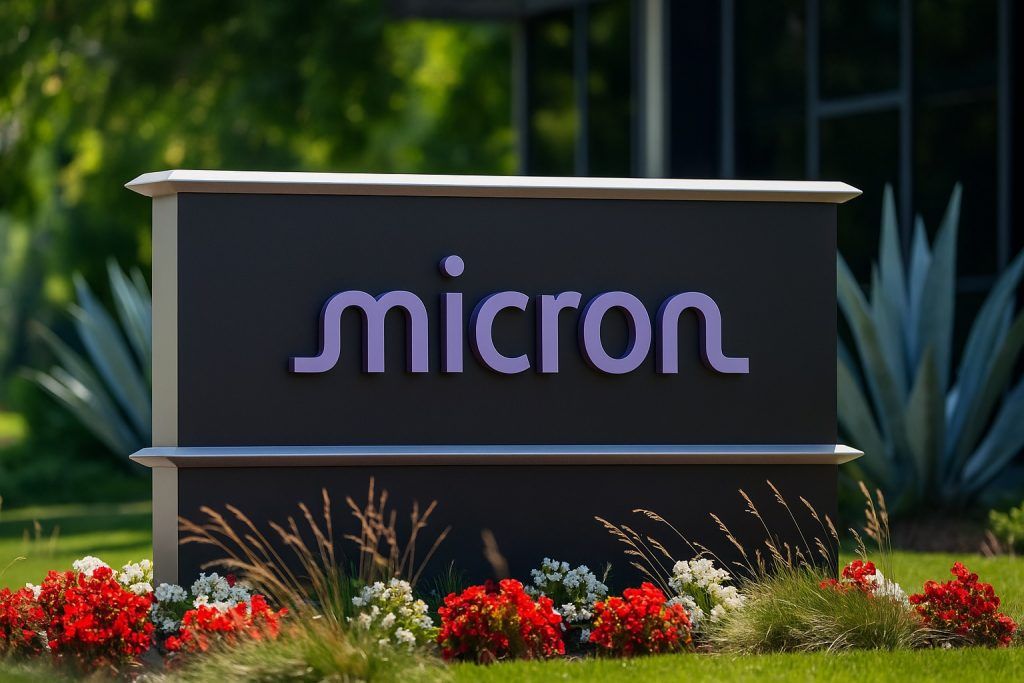Unilever share price snapshot for 20 November 2025
Unilever PLC’s London-listed shares inched higher on Thursday as investors weighed steady third‑quarter numbers against growing excitement over the upcoming Magnum Ice Cream spin‑off.
At the close of trading on 20 November 2025, Unilever (ticker: ULVR) was quoted around 4,486p, with a sell price of 4,485p and a buy price of 4,486p. That’s an 8p gain on the day, or about +0.18%, versus the previous close at 4,478p. [1]
Key intraday stats from the London session: [2]
- Opening price: 4,478.0p
- Day’s range: 4,471.0p – 4,523.1p
- Volume: c. 301k shares
- Market capitalisation: ~£110bn
- Trailing P/E ratio: ~22.0x
- Dividend yield (forward): ~3.3%
On a 52‑week view, Unilever now trades about 9% below its 52‑week high of 4,910p and roughly 4% above its 52‑week low of 4,311p. [3]
The wider market backdrop was constructive. The FTSE 100 climbed around 0.76% on the day, helped by easing UK inflation and renewed bets on a Bank of England rate cut in December. [4] Unilever’s modest rise means the stock lagged the index slightly, but stayed firmly in positive territory.
What moved the Unilever share price today?
1. Macro tailwind: UK inflation and rate‑cut hopes
TradingView flagged Unilever among the FTSE 100 names catching a bid as UK inflation slowed, fuelling expectations that the Bank of England could cut interest rates as early as December. [5]
Consumer staples like Unilever often benefit when:
- lower rate expectations take pressure off bond‑like dividend stocks; and
- investors rotate into “defensive growth” names that can hold margins even if economic growth cools.
Today’s +0.18% close understates the intraday strength: TradingView noted Unilever shares were up around 1% at one point during the session before giving back some gains into the close. [6]
2. Climate leadership at COP30 keeps ESG focus on Unilever
Unilever’s climate stance also stayed in the headlines. The company recently joined about 100 organisations backing a roadmap for phasing out fossil fuels, signing an open letter to negotiators at the COP30 climate summit in Belém, Brazil. [7]
This builds on Unilever’s own COP30 communication earlier this month, where it called on governments to strengthen national climate plans and better align them with corporate net‑zero roadmaps. [8]
For ESG‑oriented investors, this kind of advocacy reinforces Unilever’s positioning as a climate‑aligned consumer giant, even if the direct share‑price impact in a single session is hard to quantify.
Fresh news for 20 November 2025: who’s buying Unilever?
1. Cetera Investment Advisers boosts stake
One of today’s standout headlines came from the US. Cetera Investment Advisers disclosed that it has increased its position in Unilever’s NYSE‑listed ADR (ticker: UL) by 5.5% in the second quarter. [9]
Key details from the filing, highlighted by MarketBeat: [10]
- Cetera now owns 252,984 Unilever ADRs, up by 13,182 shares.
- The stake is valued at roughly $15.5m.
- Around 9.7% of Unilever’s stock is currently owned by institutional investors.
MarketBeat also notes that Wall Street analysts collectively rate Unilever’s ADR a “Moderate Buy” with a consensus price target near $73, versus an opening price today of about $58.85 — implying notable upside from US levels. [11]
While this filing relates to the US line, it refers to the same underlying company and is often read by UK investors as a vote of confidence from long‑term institutions.
2. Insider buying: Non‑executive director adds shares
On the insider front, a recent regulatory filing continues to resonate with the market. A Form 6‑K filed with the SEC shows that non‑executive director Zoe Yujnovichbought 1,610 Unilever PLC shares on the London Stock Exchange on 18 November 2025 at £44.66 per share, a total outlay of about £72,274. [12]
Insider purchases are often interpreted as management conviction in the company’s prospects, particularly when they occur close to major strategic milestones — in this case, the Magnum Ice Cream demerger.
Magnum Ice Cream demerger: the big catalyst looming over ULVR
The main structural story hanging over Unilever’s share price is the separation of its Ice Cream business, to be listed as The Magnum Ice Cream Company (TMICC).
Key dates and mechanics
According to Unilever’s shareholder circular and subsequent timetable updates:
- 6 December 2025 – Expected completion of the Magnum Ice Cream demerger and listing of TMICC shares (and depositary interests) on major exchanges.
- 9 December 2025 – Share consolidation for Unilever PLC becomes effective, with New Unilever Shares starting to trade in London and Amsterdam.
The circular explains that the share consolidation is designed to offset the numerical drop in Unilever’s share price that would result from distributing the ice cream business to shareholders.
Why it matters for today’s share price
Investors are already pricing in:
- the value of the ice cream assets they’ll receive via TMICC;
- the higher‑margin, more focused Unilever “RemainCo” that will be left behind; and
- short‑term index and arbitrage flows around the consolidation and new listing.
Unilever’s Q3 2025 trading statement reaffirmed that the demerger remains on track for completion in Q4 2025 and framed it as a way to create a “simpler Unilever, with a sharper focus and structurally higher margin profile.” [13]
As these deadlines approach, traders expect volatility to pick up around ULVR, even if today’s move was relatively subdued.
Under the bonnet: how is Unilever actually performing?
Solid Q3 2025 numbers
Unilever’s latest results, published in late October, show a business that is growing modestly but consistently: [14]
- Underlying sales growth (USG): 3.9% in Q3 (4.0% excluding Ice Cream).
- Volume growth: 1.5% (1.7% excluding Ice Cream).
- Power Brands — the flagship labels that drive most of the profit — achieved USG of 4.4%, with 1.7% volume growth and 2.6% price/mix.
- Turnover: €14.7bn, down 3.5% year‑on‑year, mainly due to currency headwinds and disposals.
- Quarterly dividend: increased by 3% versus Q3 2024.
- Full‑year 2025 outlook: management reiterated its target of 3–5% underlying sales growth and an improvement in underlying operating margin.
Earlier in the year, Unilever highlighted strong contributions from its Beauty & Wellbeing, Personal Care and Ice Cream businesses, as well as improving trends in priority emerging markets such as China and Indonesia. [15]
Turnaround strategy and margin ambitions
Beyond the headline numbers, Unilever is pushing an extensive turnaround and productivity programme:
- The group is aiming for 3–5% annual sales growth and an underlying operating margin above 18.9% under its medium‑term plan. [16]
- Management is reviewing the top 200 global roles and simplifying the business structure to cut costs and speed up decision‑making. [17]
This strategic reset followed leadership changes earlier in 2025, when Fernando Fernandez took over as CEO and reaffirmed the company’s focus on Beauty & Wellbeing, Personal Care, Home Care and Foods, while executing the Ice Cream separation. [18]
Dividends: income still a key part of the Unilever story
For many UK investors, Unilever is first and foremost a dividend stock. Today’s share‑price move comes against a backdrop of steady, inflation‑beating payouts.
According to Hargreaves Lansdown data: [19]
Recent quarterly dividends (per share):
- Q3 2025: 39.28p – ex‑dividend 6 November 2025, payable 5 December 2025 (declared, not yet paid).
- Q2 2025: 39.16p – paid 12 September 2025.
- Q1 2025: 38.87p – paid 13 June 2025.
- Q4 2024: 37.75p – paid 28 March 2025.
On a trailing basis, Unilever’s dividend yield is around 3.3%, supported by 2024 dividend cover of roughly 1.6x earnings. Over the last five years, the distribution has been remarkably consistent, with annual dividends hovering around €1.67–1.68 per share. [20]
For income seekers, today’s modest uptick in the share price doesn’t materially change the yield, but it does underline Unilever’s role as a defensive cornerstone in many UK and global portfolios.
How are analysts valuing Unilever now?
City and Wall Street targets
Several data providers suggest that professional analysts still see upside from current levels:
- Investors Chronicle / S&P Global Market Intelligence: The median 12‑month price target is 5,177p, based on 18 analyst estimates, implying roughly 16% upside from a recent price of 4,478p. The target range spans 3,905p–6,317p, highlighting a wide dispersion of views. [21]
- DirectorsTalk analysis (3 November 2025): Using a previous trading level of 4,589p, the site calculated a 9.68% upside to an average target price of ~5,033p, with a noted dividend yield around 3.4% and a mixed set of “buy”, “hold” and “sell” ratings (13 / 3 / 3).
- US ADR consensus (MarketBeat): For the NYSE‑listed UL ADR, the average target is about $73 vs a recent price near $58.85, and the consensus rating is “Moderate Buy” (2 Strong Buy, 4 Buy, 2 Hold, 2 Sell). [22]
Valuation multiples today
On current numbers, Unilever trades at:
- ~22x trailing earnings on the London line, based on HL data. [23]
- A dividend yield of roughly 3.3%, broadly in line with the wider European consumer‑staples sector. [24]
Those metrics put ULVR in the “quality at a reasonable price” bucket rather than outright bargain territory. Supporters argue that a global brand portfolio, strong free cash flow and a cleaner post‑demerger structure justify the premium; sceptics worry about muted top‑line growth and FX sensitivity.
Technical picture: where does ULVR sit in its range?
Based on Hargreaves Lansdown’s performance data for Unilever: [25]
- 1‑week performance: +2.8%
- 1‑month: +4.0%
- 6‑month: +3.7%
- 1‑year: +1.7%
In other words, today’s close continues a gradual grind higher from the October lows, but the stock remains only slightly positive over 12 months.
With a 52‑week range of 4,311p–4,910p, ULVR is currently:
- around 4% above its 52‑week low, and
- about 9% below its 52‑week high. [26]
Some quantitative services, such as StockInvest, had pencilled in a “fair” opening price of 4,485p for 20 November, almost exactly where the stock began the day, and highlight the 4,910p high and 4,311p low as key resistance and support levels respectively. [27]
What to watch next for Unilever shareholders
Going into the final weeks of 2025, several themes are likely to dominate the Unilever share‑price narrative:
- Execution of the Magnum Ice Cream demerger and share consolidation
- Smooth delivery on the 6 and 9 December milestones will be crucial. Any delays or unexpected tax / index implications could jolt the share price.
- Delivery vs 2025 guidance
- With 3–5% underlying sales growth and margin improvement reaffirmed for 2025, Q4 trends — especially in Beauty & Wellbeing and Personal Care — will be watched closely. [28]
- Cost‑saving and restructuring progress
- Investors will look for tangible evidence that the productivity programme and role streamlining are feeding through to higher margins without damaging growth. [29]
- ESG and climate developments at COP30
- As a vocal corporate participant, Unilever’s stance on climate policy — and any commitments that might affect its supply chain, packaging or energy costs — will remain under the microscope. [30]
- Macro backdrop: rates, FX and consumer demand
- A BoE rate cut and further easing in inflation would generally be supportive of defensive yield names like Unilever, while sharp currency moves or a consumer slowdown in key markets could act as a drag. [31]
Bottom line
On 20 November 2025, the Unilever share price ticked gently higher, closing around 4,486p as investors digested benign macro news, ongoing climate‑policy headlines and a steady stream of updates ahead of the Magnum Ice Cream demerger.
With institutional investors adding to positions, insider buying in London and analysts still seeing mid‑teens percentage upside on average, sentiment around ULVR is cautiously constructive. At the same time, the shares are only slightly above their 52‑week low, reflecting persistent questions over growth momentum and the execution risks of a complex spin‑off.
For now, Unilever remains what it has long been for many investors: a defensive, dividend‑paying stalwart, with the potential for a re‑rating if the Magnum demerger and turnaround plan deliver the sharper, higher‑margin Unilever that management has promised.
Note: All prices and data are delayed and approximate, based on publicly available sources as of the London market close on 20 November 2025. This article is for information only and does not constitute investment advice. Always do your own research or consult a regulated adviser before making investment decisions.
References
1. www.hl.co.uk, 2. www.hl.co.uk, 3. www.hl.co.uk, 4. www.hl.co.uk, 5. www.tradingview.com, 6. www.tradingview.com, 7. www.tradingview.com, 8. www.unilever.com, 9. www.marketbeat.com, 10. www.marketbeat.com, 11. www.marketbeat.com, 12. www.stocktitan.net, 13. www.unilever.com, 14. www.unilever.com, 15. www.unilever.com, 16. www.reuters.com, 17. www.reuters.com, 18. www.reuters.com, 19. www.hl.co.uk, 20. www.hl.co.uk, 21. markets.investorschronicle.co.uk, 22. www.marketbeat.com, 23. www.hl.co.uk, 24. www.hl.co.uk, 25. www.hl.co.uk, 26. www.hl.co.uk, 27. stockinvest.us, 28. www.unilever.com, 29. www.reuters.com, 30. www.unilever.com, 31. www.tradingview.com







